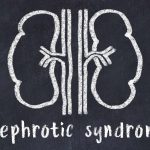
Sickle Cell Disease in Children: Symptoms, Diagnosis and Prevention by Dr. Stalin Ramprakash
10 min readWritten by Editorial Team


Sickle Cell Disease (SCD) is a blood disease. In this condition, the red blood cells (RBCs) in the patient’s bloodstream become sickle-shaped (hence the name). This abnormal shape happens due to the production of abnormal types of haemoglobin in the blood. Healthy children produce healthy haemoglobin, which in turn facilitates the production of healthy, round-shaped RBCs which are like a disc. Their disc shape enables them to travel smoothly through blood vessels by squeezing through tiny blood vessels. On the other hand, SCD patients have hard, sticky, and sickle-shaped RBCs. Free movement of RBCs through the blood vessels is impossible with such oddly-shaped RBCs.
RCBs carry oxygen to key organs in the body. They need to be flexible to do their job and flow easily through blood vessels. The red blood cells of sickle cell disease are also stickier. The blood flow of SCD patients is not smooth and full of blockages. These blockages can cause severe pain, blood infections, organ failure, and in the most severe cases – strokes. SCD is a genetic disease. Approximately 5 to 6% of the world’s population carries the gene that causes SCD. Children of these carriers may be born with SCD, and they have to live with it for the rest of their lives. Thankfully, not all children with SCD are very severely affected. But, they will require special care and maybe treatment throughout their lives. Here’s the complete guide to SCD in children.
In This Article
- Sickle Cell Disease in Children
- Causes of Sickle Cell Disease in Children
- Categories of Children at Risk For Getting Sickle Cell Disease
- What are the Symptoms of Sickle Cell Disease in Children?
- What are the Complications of Sickle Cell Disease in Children?
- Diagnosing Sickle Cell Disease in Children
- When to See a Doctor For Sickle Cell Disease?
- Long-Term Outlook for SCD in Children
- Can My Child Be Cured of Sickle Cell Disease?
- FAQ’s
Sickle Cell Disease in Children
Sickle Cell Disease (SCD) is a blood disease/disorder that many children are born with. They receive it from their parents’ genes. As stated above, SCD patients (including children) produce an abnormal type of haemoglobin. Haemoglobin is the protein inside RBCs that carries oxygen. The RBCs distribute oxygen to all organs of the body. The tissues and organs of children with SCD don’t receive healthy amounts of oxygen.
On top of that, their blood vessels are blocked because of the sickle-shaped RBCs. These blockages trigger pain. Long-term effects may include organ failure, strokes, and other respiratory and nervous system complications. Plus, sickle cells expire much quicker than healthy blood cells.

In the bodies of healthy children, their spleens filter all infections and potentially harmful agents out of the blood. However, sickle cells don’t pass through these filters alive. They die during the process of spleen filtration, lowering the RBC count in children. Sickle cells can cause significant damage to the spleen during this process. Children with unhealthy spleens are significantly more prone to serious bacterial and viral infections.
Having the sickle cell gene can cause countless complications in children. Some children with SCD may not display symptoms. However, children start exhibiting symptoms of this disease during the first 5-6 months of their lives. SCD can manifest in different forms. Doctors have to conduct various tests to determine what form of SCD a child has. The most common forms of SCD include:
1. Sickle Cell Anaemia
Also known as “Haemoglobin SS,” this version of SCD occurs when a child receives one sickle cell gene mutation from each parent.
2. Haemoglobin SC
This form of SCD occurs when a child receives one gene change for haemoglobin C from one parent and one sickle cell gene mutation from the other.
3. Haemoglobin S-beta Thalassemia
In this condition, the child receives one gene mutation for beta-thalassemia from one parent and a sickle cell gene mutation from the other parent.
Causes of Sickle Cell Disease in Children
We are all born with two replicas of the haemoglobin gene. Every blood cell in our bodies features these two copies. We receive one from our mothers and the other from our fathers. During reproduction, only one of the two haemoglobin genes enters the egg/sperm cells. When the egg and the sperm cells converge, whatever haemoglobin genes the parents have – the children receive as well.
The haemoglobin genes the baby receives are contingent on the haemoglobin genes the parent carries. For a child to have SCD, he or she must have two replicas of the sickle haemoglobin gene. For this reason, SCD is known as a recessive condition. Unless the child receives two mutated haemoglobin genes, one from each parent, they won’t get SCD.
Couples, where both members have the “Sickle Cell Trait”, are at risk of birthing children with this genetic disease. Thankfully, due to advances in medical technology, parents can know what types of haemoglobin genes they have. Based on this understanding, parents can estimate the nature of the gene combinations their children inherit.
Categories of Children at Risk for Getting Sickle Cell Disease
Infants born with only one sickle cell gene mutation are healthy. They won’t suffer from Sickle Cell Disease. But, they do have the Sickle Cell Trait, which makes them carriers of the disease. When two adults with this trait have a child, one in four chances is that their child can have SCD. Parents who give birth to children with SCD once are likelier to have another child with SCD (25% probability). The probability of children carrying the “Sickle Cell Trait” is 50%, just like their parents.
Here are the common risk factors for children getting SCD:
- Family history of SCD.
- Children whose families hail from Africa, the Caribbean, and Latin American countries are at higher risk of inheriting SCD.
- Families from the Indian subcontinent, Middle East, and Mediterranean countries are also at risk of passing or receiving SCD.
What are the Symptoms of Sickle Cell Disease in Children?

The most telling symptom of SCD in children is severe pain. Children experience episodes of intense pain in their limbs, chest, and other body parts. These episodes are known as “pain crises.” During pain crises, children experience the following symptoms:
- Intense pain in multiple parts of the body
- Fever
- Dehydration
- Mental stress
- Tiredness
- Dizziness
Pain crises may last for hours, days, and sometimes weeks. Parents can attempt to manage mild pain at home with pain killers and plenty of oral fluids. But, children who experience hours of “pain crises” or experience severe uncontrollable pain require immediate treatment in hospitals.
[Read : Heart Rate In Children]
General Symptoms of SCD in Children
Children with SCD also experience shortages of RBCs in their bloodstreams. These shortages lead to anaemia. Children experiencing Sickle Cell Anaemia exhibit the following symptoms:

- Increased heart rates
- Trouble staying focused
- Irritable and aloof behaviour
- Light-headedness
- Respiratory issues
- Dizziness
- Body aches
- Tiredness
- Paleness in the skin, lips, and nail beds
- Jaundice (yellowing of the skin and white regions of the eyes)
Serious Symptoms of SCD in Children
Children who undergo SCD testing 5-6 months after their births receive supportive care from doctors. In some regions of the world, checking infants for abnormal haemoglobin production at birth is standard practice. Thanks to these tests, serious, life-threatening symptoms of SCD can be avoided from the first few days of their lives.
However, children who don’t undergo these tests may not display symptoms of SCD until they’re older. Parents may even misinterpret the initial symptoms of SCD with body pains, fevers, etc. Children who don’t receive early SCD treatment may start exhibiting extremely severe symptoms with age.
That’s because their sickle-shaped RBCs die faster than their normal cells. Parents must seek emergency medical care immediately if their children exhibit these severe symptoms of SCD
- Yellow or very pale skin
- Extreme fatigue
- Shortness of breath
- Stomach swelling
- Severe stomach pain
- Dizziness, inability to stand straight
- Sudden weakness of arms or legs
- Severe headaches
- Long periods of fevers above 101°F (or 38°C)
- Pain that’s not going away with painkillers
- Severe chest pain
- Vision-related problems
- Seizures
- Slurred speech
- Loss of consciousness
- Numbness in certain parts of the body
- Painful erection on the penis which is not resolving
What are the Complications of Sickle Cell Disease in Children?
Many children with SCD don’t suffer from severe complications. However, some do, and they require special medical attention and emergency treatment. Here are the most common complications children with SCD experience –
1. Acute Chest Syndrome
A painful condition caused by lung infections. These infections occur due to the blockage of healthy blood flow into the lungs. This can progress very fast and can become life-threatening. Children with Acute Chest Syndrome experience severe chest pain, respiratory issues, and long bouts of high fevers.
Doctors advise patients to give their children antibiotic medicines to curb the initial chest pains. Antibiotic medicines will kill the bacterial infections causing the pain. Oxygen therapy can help children with SCD-related Acute Chest Syndrome improve their breathing. This condition is a medical emergency and requires hospital admission of the child.
However, these treatments for children with Acute Chest Syndrome are temporary. Long-term treatment typically involves blood transfusions where children receive new blood.
[Read : Anemia in Children]
2. Anaemia

Anaemia (SCD-related) occurs due to the absence of healthy, circular RBCs in the body. The sickle-shaped RBCs don’t carry healthy amounts of oxygen to the child’s key organs. Children with SCD-related anaemia exhibit the following symptoms – pale skin, pale lips, fatigue, inability to breathe properly, and developmental delays.
Treatment for SCD-related anaemia depends on the severity of the child’s symptoms. The child needs to be on regular penicillin antibiotics to ensure that the poor function of the spleen does not lead to life-threatening infection. Blood transfusions may also be necessary.
3. Hand-Foot Syndrome (Dactylitis)
This is a relatively rare condition where the child’s hands and feet are impacted by sickle cells. The unhealthy sickle cells block all blood flow to the child’s limbs. As a result, children experience severe pain, coldness, and swelling in their hands and feet. Children with hand-foot syndrome exhibit very clear symptoms. Pain medicines can help them cure the “pain crises.”
4. Infections

Children with SCD are more prone to bacterial and viral infections because their organs don’t receive healthy amounts of oxygen. If their sickle-shaped RBCs cause spleen damage, the risks of contracting infections like pneumonia, blood infection or meningitis are higher. Infections on top of SCD can cause severe fevers, breathing problems, and bone pain in children.
The only way a parent can prevent his/her child (with SCD) from contracting these infections is with timely vaccinations. A regular small dose of antibiotic medicines for SCD children from 3 months.
5. Rarer Complications of SCD
Some other rarer complications of SCD in children Include
a) Splenic Crisis
The child’s spleen gets blocked with sickle cells and expands in size, especially in young children. The spleen can enlarge rapidly and a lot of blood volume can get pooled in the spleen, leading to low blood pressure and not enough blood to go around. Blood transfusion and bringing the blood pressure back to normal are the only cure for splenic crises.
b) Strokes
When unhealthy sickle-shaped RBCs block blood flow to the child’s brain, the child may get a stroke. The child can present with sudden weakness of one part of the body. Vision problems or temporary blindness may arise if these blockages impact the parts of the brain connected to the eyes. Small infarcts can happen due to small blood vessels getting blocked which may accumulate over time and the child can present with learning difficulties, difficulties in concentration, or clumsiness.
c) Malnutrition
Damage to organs like the kidneys or the liver may cause malnutrition in children. Growth retardation and infertility are also common effects of SCD in male children.
Diagnosing Sickle Cell Disease in Children

SCD is typically diagnosed at birth when newborn screening is standard practice. At-risk children (children with parents who have the Sickle Cell Trait) undergo screening tests and blood tests. They also undergo a specific test called “haemoglobin electrophoresis.” This test clarifies whether the child is a carrier of the sickle cell gene mutation. It also reveals the risk of the child suffering from SCD-related diseases and complications.
Older children who haven’t undergone SCD screening right after birth also go through the same types of tests. Their family history, the child’s medical history, MRI scans, and physical exams are all part of their diagnoses. Overall, these tests confirm the diagnosis.
Treating Sickle Cell Disease in Children

Currently, a bone marrow transplant (also called stem cell transplant) is the only known “permanent” cure for children with SCD. However, these transplants are expensive, risky, and only available in certain hospitals around the world. Not every child with sickle cell will need a transplant, but a proportion of them with severe symptoms or complications will need it. Thankfully, in many patients, SCD in children can be managed with therapy. Therapy for children with SCD involves –
- Immunizations to Prevent the Risk of Infections: Daily doses of penicillin, vaccinations for flu, meningitis, etc.
- Folic Acid Supplements: Facilitate the healthy production of RBCs (making up for the sickle-shaped RBCs that die rapidly)
- Pain Medicines: Manage painful episodes and pain crises.
- Hydroxyurea: In many children, the severity of the symptoms can reduce significantly by taking this medication regularly. They will need to be under close follow-up and may need regular blood tests while they are on this medication.
In severe cases, children with SCD may have to undergo blood transfusions.
[Read : Bone Marrow Transplant For Children]
When to See a Doctor For Sickle Cell Disease?
The quicker children with SCD are diagnosed, the better their condition can be managed and some of the life-threatening complications can be avoided. Treatment for SCD depends on the severity of the child’s symptoms, his/her age, and overall health conditions. Parents must seek treatment from Haematologists, experts in blood disorders. Seek medical care right away if the child is experiencing severe symptoms of this condition (discussed earlier).
Long-Term Outlook for SCD in Children
Thanks to advances in preventive care, SCD is no longer a life-threatening condition for children in the majority. Preventive care and regular medications can prevent children with SCD from suffering from the life-threatening complications of this disease. Recovery depends on the severity of the child’s disease and how much preventive care he/she receives. The average life expectancy of children with SCD is 40+.
Can My Child Be Cured of Sickle Cell Disease?
Yes. Children with SCD who undergo Bone Marrow Transplants (BMTs) or hematopoietic stem-cell transplants can be completely cured. The transplant will replace their sick, sickle-shaped stem cells with healthy, well-functioning stem cells. The need for transplant will need to be individualized after assessing the severity of the disease, past complications, and family preferences. Your doctor will explain the risks and benefits of such a procedure.
FAQ’s
1. How Can a Parent Help a Child Live With Sickle Cell Disease?
When children with SCD are managed by specialists, they don’t develop severe complications. But, this depends on how well the parents and the children with the disease follow the recommended preventive efforts. Some of the steps include:
- Eating healthy diets
- Getting sufficient sleep
- Drinking plenty of water (especially during pain crises)
- Keeping the child warm especially in cold weather with good winter clothing (gloves, caps, and socks, etc)
- Children with SCD are also advised to avoid high altitudes, cold temperatures (e.g. swimming in cold water) and receive timely vaccinations.
2. Should I Test My Infant For SCD?
Yes. All infants should go through various screening tests. SCD screening should be one of them.
Read Also: Blood Infection In Children – Causes, Symptoms, and Treatments

Editorial Team,
With a rich experience in pregnancy and parenting, our team of experts create insightful, well-curated, and easy-to-read content for our to-be-parents and parents at all stages of parenting.Read more.
Responses (0)
Want curated content sharply tailored for your exact stage of parenting?
Sponsored content
Discover great local businesses around you for your kids.
Get regular updates, great recommendations and other right stuff at the right time.











